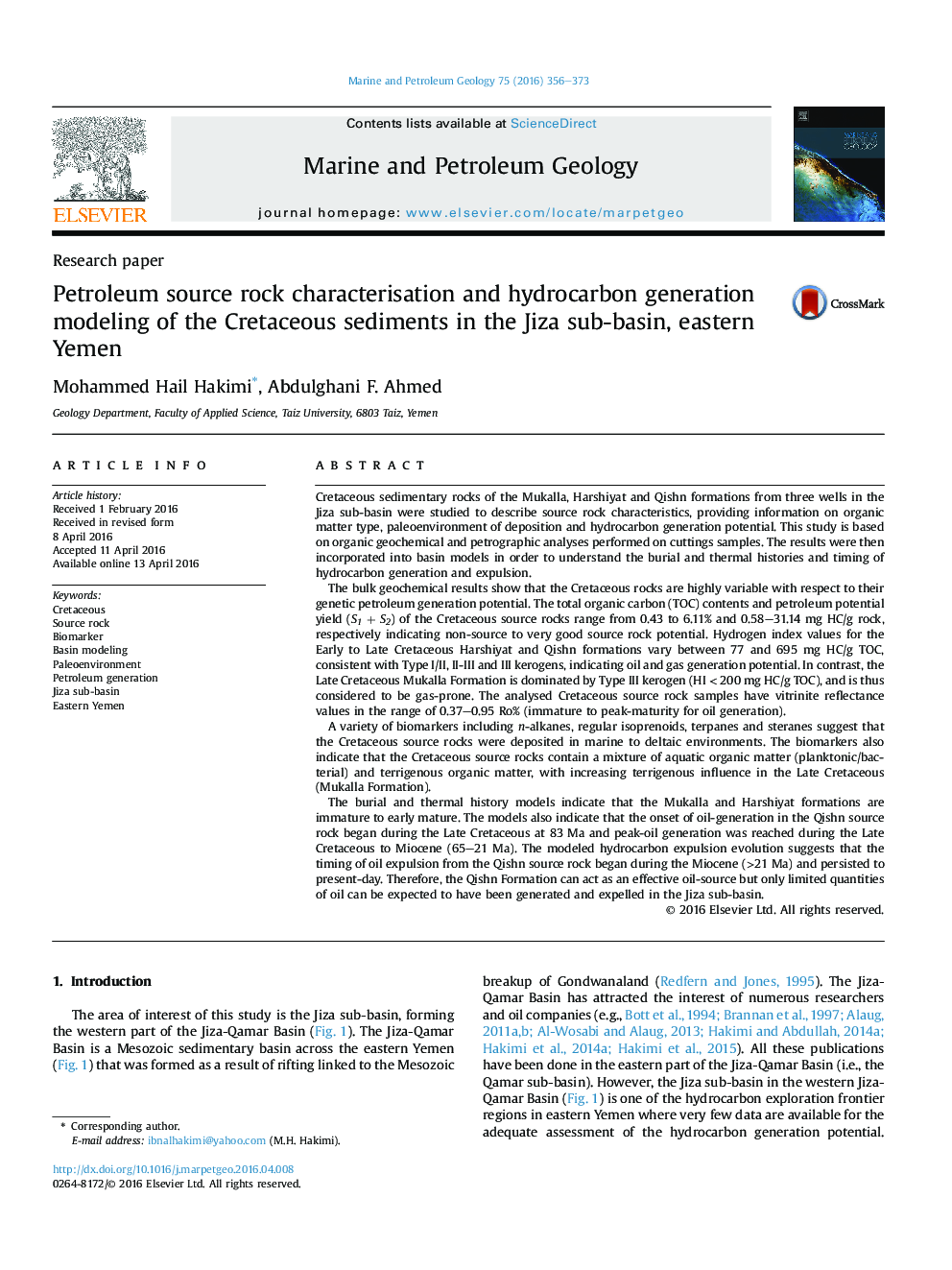| کد مقاله | کد نشریه | سال انتشار | مقاله انگلیسی | نسخه تمام متن |
|---|---|---|---|---|
| 6434366 | 1637152 | 2016 | 18 صفحه PDF | دانلود رایگان |
- Non-source to good source rocks were identified in the studied Cretaceous rocks.
- Oil and gas generation were expected from Cretaceous source rocks.
- Biomarkers reflect marine and deltaic depositional environments for Cretaceous source rocks.
- Oil generation from Qishn Formation was began in Late Cretaceous.
Cretaceous sedimentary rocks of the Mukalla, Harshiyat and Qishn formations from three wells in the Jiza sub-basin were studied to describe source rock characteristics, providing information on organic matter type, paleoenvironment of deposition and hydrocarbon generation potential. This study is based on organic geochemical and petrographic analyses performed on cuttings samples. The results were then incorporated into basin models in order to understand the burial and thermal histories and timing of hydrocarbon generation and expulsion.The bulk geochemical results show that the Cretaceous rocks are highly variable with respect to their genetic petroleum generation potential. The total organic carbon (TOC) contents and petroleum potential yield (S1Â +Â S2) of the Cretaceous source rocks range from 0.43 to 6.11% and 0.58-31.14Â mg HC/g rock, respectively indicating non-source to very good source rock potential. Hydrogen index values for the Early to Late Cretaceous Harshiyat and Qishn formations vary between 77 and 695Â mg HC/g TOC, consistent with Type I/II, II-III and III kerogens, indicating oil and gas generation potential. In contrast, the Late Cretaceous Mukalla Formation is dominated by Type III kerogen (HIÂ <Â 200Â mg HC/g TOC), and is thus considered to be gas-prone. The analysed Cretaceous source rock samples have vitrinite reflectance values in the range of 0.37-0.95 Ro% (immature to peak-maturity for oil generation).A variety of biomarkers including n-alkanes, regular isoprenoids, terpanes and steranes suggest that the Cretaceous source rocks were deposited in marine to deltaic environments. The biomarkers also indicate that the Cretaceous source rocks contain a mixture of aquatic organic matter (planktonic/bacterial) and terrigenous organic matter, with increasing terrigenous influence in the Late Cretaceous (Mukalla Formation).The burial and thermal history models indicate that the Mukalla and Harshiyat formations are immature to early mature. The models also indicate that the onset of oil-generation in the Qishn source rock began during the Late Cretaceous at 83Â Ma and peak-oil generation was reached during the Late Cretaceous to Miocene (65-21Â Ma). The modeled hydrocarbon expulsion evolution suggests that the timing of oil expulsion from the Qishn source rock began during the Miocene (>21Â Ma) and persisted to present-day. Therefore, the Qishn Formation can act as an effective oil-source but only limited quantities of oil can be expected to have been generated and expelled in the Jiza sub-basin.
Journal: Marine and Petroleum Geology - Volume 75, August 2016, Pages 356-373
